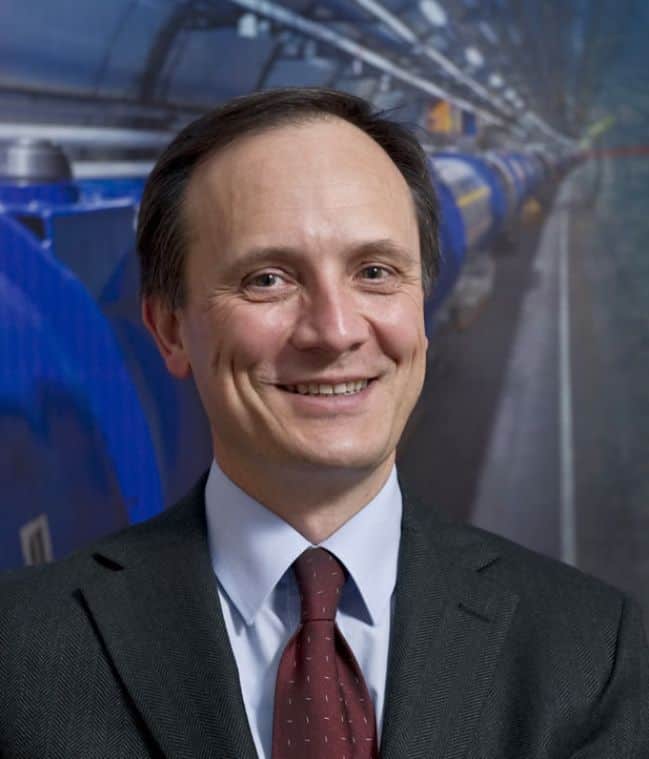By Melina Filzinger, IIASA Science Communication Fellow
In his lecture at IIASA, Maurizio Bona, senior advisor for relations with parliaments and science for policy, and senior advisor on knowledge transfer at the European Organization for Nuclear Research (CERN) discussed the question “Science and diplomacy–two different worlds?”, focusing on the dual role of CERN as both a research laboratory and an intergovernmental institution.

Maurizio Bona ©CERN
According to Bona, international research centers like CERN and IIASA foster international and intercultural communication by bringing together people with different backgrounds and ideas to work on a common goal. In this context, these organizations act as communication channels where science is used as a universal language.
CERN was established in 1953 to carry out research on particle physics, but also to reunite a Europe that was divided after World War II, and to re-open the dialogue between European countries and beyond. While CERN was not involved in politics directly, an important point of the lecture was that science can provide a neutral field for dialogue and connect people that would not meet otherwise. In this way, international research institutes can contribute to science diplomacy in a very indirect and informal way.
IIASA was founded in 1972 to find solutions to global problems, and with a similar goal of using scientific cooperation to build bridges across the Cold War divide. Despite the vastly different research done at CERN and IIASA, both organizations have roots in science diplomacy that stem from the fact that today’s problems, regardless of whether they are fundamental or applied in nature, are often too complex to be solved by one country or discipline alone.
Even though CERN is a European organization, it attracts researchers from all over the world, like IIASA. In January 2018, 41% of scientific users (researchers using CERN facilities that are not paid by CERN) were from non-member countries and contributed their expertise as well as research equipment. In order to ensure that scientific advancement and not national interests are the basis of the research objectives at CERN, it is based on a simple but strong Convention that excludes military applications and ensures transparency. Additionally, CERN stays away from political affiliations.
Based on the success of the CERN model, the first particle accelerator in the Middle East, Synchrotron-Light for Experimental Science and Applications in the Middle East (SESAME), was established in 2004. Its organizational structure is based largely on that of CERN, and it was thought out explicitly as a way to bring together conflicting Middle Eastern countries, while at the same time advancing science. SESAME’s member states are Cyprus, Egypt, Iran, Israel, Jordan, Pakistan, Palestine, and Turkey and the facility has been open to scientific users from the Middle East and beyond since 2017.
Beyond fostering international and intercultural communication by bringing together people with different backgrounds and ideas to work on a common goal, international research institutes can also influence policy more directly. For example, CERN has been an observing member at the UN general assembly since 2012 and has had an influence on shaping the UN 2030 Agenda for Sustainable Development, advocating for the importance of education and fundamental research.
IIASA goes one step further, explicitly aiming to shape policies and help politicians make informed, evidence-based decisions. IIASA research has for example shaped European air pollution policy and has led to real improvements in the sustainable management of scarce resources in a number of countries. The institute’s independence and political neutrality are key for its credibility as an adviser to policy makers. IIASA is nongovernmental and is instead sponsored by its 23 national member organizations. Today IIASA member countries make up 71% of the global economy and 63% of the global population, making IIASA particularly well-suited to address global challenges.
Maurizio Bona closed his lecture with the following quote by Daniel Barenboim, a world-famous pianist and conductor:
“Let me tell you something: This is not going to bring peace. What it can bring is understanding, the patience, the courage, and the curiosity to listen to the narrative of the other.”
Daniel Barenboim, Ramallah concert, August 2005.
This quote was originally meant to be understood in the context of international collaboration in music, but is also applicable to science, and in fact to any endeavor that brings together people from different backgrounds to work towards a common goal.
The lecture left the audience with some open questions, like how to measure the impact of science on society, or how involved science should be in diplomacy. Some of these questions were picked up on in a lively discussion after the talk. For now, I think it is fair to conclude that the histories of both CERN and IIASA show that international research institutes can have a positive impact on society while remaining politically neutral and unbiased in their scientific goals.
Note: This article gives the views of the authors, and not the position of the Nexus blog, nor of the International Institute for Applied Systems Analysis.

You must be logged in to post a comment.